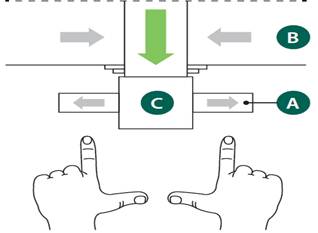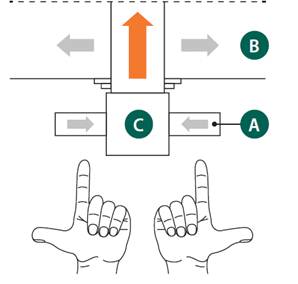Industry Reports
Chaeng Rules of thumb for adjusting rotary kiln support rollers
A simple way to remember what an adjustment on the support rollers will cause to the movement of the rotary kiln.
Ideally the rotary kiln should be send to float the thrust riding ring between the upper and lower thrust rollers, maintaining even riding ring to roller wear and minimizing the load on the thrust rollers.
That is accomplished by skewing the rotary kiln support roller shafts at slight angles to the rotary kiln shell and it is also known as training the rotary kiln.
Training the rotary kiln takes adjustments made in small increments. Place dial indicators on the bearing housings to measure and record the movement of each bearing. Movements should be limited to 0.005” to 0.020” (0.12 mm to 0.50 mm) at any given time.
The results of an adjustment may take several hours to show the full effects of any roller move. All movements of all bearings should be recorded during the adjustment process, as should all future adjustments of any bearing. These records will be an aid to maintain proper rotary kiln alignment.
The reasons for rotary kiln support roller adjustments
1. rotary kiln support roller adjustments to control axial thrust
(1) Most common reason for adjusting support rollers on a rotary kiln or a rotary dryer
(2) It is a best practice to keep light thrust on the downhill thrust roller to minimize over adjustment of the rollers
(3) By keeping lighter thrust on the downhill thrust roller the thrust roller will not wear excessively. That is an important factor in keeping full contact of the gear on the face of the pinion.
2. rotary kiln support roller adjustments to correct the alignment of the unite
(1) Kiln support rollers need to be adjusted while the kiln is in operation
(2) Dryers can be moved by jacking up the unite and moving rollers to the desired location
(3) In both cases, any final adjustments must take into account the individual thrust of each roller bearing and the axial thrust of the unite
3. Support roller adjustments to raise gear out of the pinion
(1)Always move the rollers in equally on all piers and avoid moving the drive pier only. Moving drive pier only will over time change the centerline of the unite with the support rollers and will cause maintenances issues.
(2)Use a 4:1 ratio on the roller to move the desired distance. For example it will take 1/8’’ movement on each roller or 1/4’’ on each pier to move the gear 1/16’’ out of the pinion.
4. Support roller adjustments relieve hot bearing conditions or to relieve thrust on individual bearings
Rotary kiln Support roller adjustments

A) Bearing roller
B) Kiln
C) Carrying roller
Index finger indicates bearing (A) and direction to move. Kiln (B) moves in direction indicated by thumb of the same hand. Alternatively stand on the up running side of the kiln. Now with palms facing up an inward movement on the right bearing will move the kiln to the right. The carrying roller will move opposite to the kiln.

A) Bearing roller
B) Kiln
C) Carrying roller
After all carrying rollers have been adjusted; the carrying rollers and riding rings may not have full contact across their faces. No changes in carrying roller adjustment should be made. It is better to allow the rolling surfaces to wear in to full contact than it is to cut the rolls obtain full contact.
When support roller adjustments are made, observe the bearing temperatures and the kiln drive amperage. Sudden changes in temperature or kiln drive amperage will indicate problems



